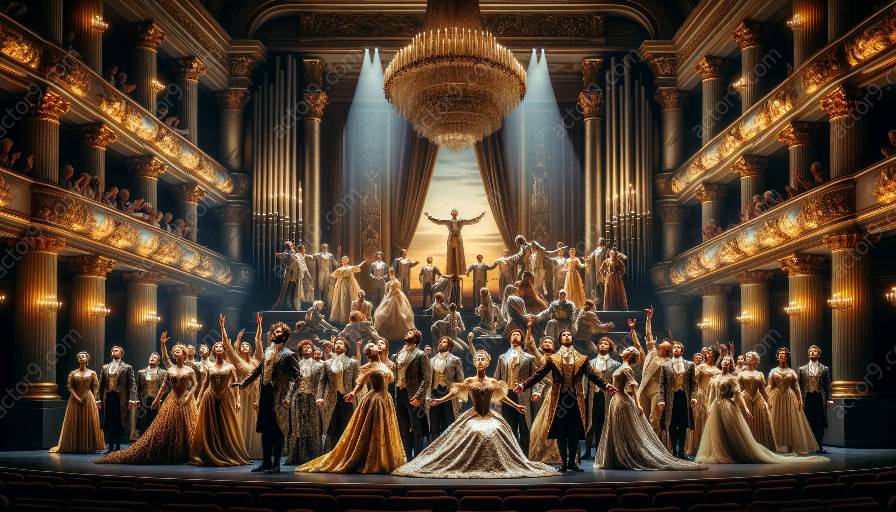Opera, with its rich history and diverse influences, has evolved considerably over the centuries. As it has progressed, the art form has raised questions and challenges related to representation and diversity. In this comprehensive exploration, we delve into how diversity has shaped the world of opera, its representation, and the impact on opera performances.
Early History and Influences
The roots of opera date back to the late 16th century in Italy, and it was profoundly influenced by various cultures and traditions. Early operas emerged primarily from European countries, reflecting the predominant societal norms and values of the time. The thematic and structural elements of these operas were largely shaped by the perspectives and experiences of a relatively homogenous demographic.
As opera spread across Europe and the world, each region and culture infused its own unique characteristics, adding to the diversity of the art form. However, despite these influences, the representation of diverse voices and stories remained limited, with few opportunities for marginalized groups to participate and share their narratives on the opera stage.
Challenges and Shifts in Representation
Over time, the lack of diversity in opera became increasingly evident, prompting discussions and movements for change within the industry. Questions of representation and inclusivity gained prominence as opera institutions and artists sought to address the historical underrepresentation of certain voices and narratives.
Advocates for diversity in opera emphasized the importance of authentic representation and the need to provide platforms for artists from diverse backgrounds. This led to a reexamination of casting practices, repertoire selection, and storytelling approaches, with a growing commitment to showcasing a wider range of experiences on stage.
The Impact on Opera Performance
The evolution of diversity in opera has had a profound impact on opera performance. With a greater emphasis on representation, opera companies have actively worked to feature a more inclusive array of stories and characters. This shift has not only enriched the thematic content of opera productions but has also expanded the repertoire, providing audiences with a more diverse and dynamic artistic experience.
Furthermore, the engagement of diverse voices in opera has sparked innovation in the presentation and interpretation of traditional works, breathing new life into the art form. Opera performances now incorporate a broader spectrum of cultural influences, musical styles, and narratives, reflecting the evolving global landscape and resonating with a wider audience.
Embracing Diversity for the Future
As opera continues to evolve, the ongoing journey toward greater diversity and representation remains crucial. The desire to provide a platform for a multitude of voices, perspectives, and experiences is driving positive transformation within the opera community. It is through this embrace of diversity that opera can truly thrive, resonating with contemporary audiences and remaining relevant in an ever-changing world.
In conclusion, the evolution of diversity in opera has shaped the art form in profound ways, from its historical roots to its modern-day performances. By exploring and addressing issues of representation and inclusivity, opera has adapted to reflect a more diverse and vibrant society, enriching the cultural fabric of the art form for generations to come.































